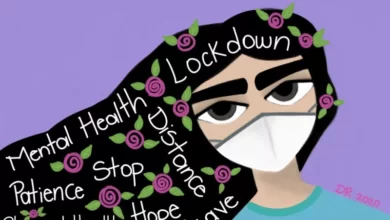Student-centered learning and its benefits

As our world continues to evolve, so does the way we approach education. Gone are the days of traditional teaching methods where the teacher stands in front of the class and lectures on a given subject. Today, the focus is on student-centered learning, a more interactive approach that puts the student at the center of the learning experience. This approach has many benefits that we will explore in this article.
What is student-centered learning?
Student-centered learning is an approach that focuses on the student’s needs, abilities, and interests. In this approach, the teacher acts as a facilitator, guiding students to learn and discover for themselves. The teacher helps the students to develop skills such as critical thinking, problem-solving, and collaboration.
Benefits of student-centered learning
Improves student engagement
When students are actively involved in the learning process, they are more engaged and motivated to learn. Student-centered learning provides students with opportunities to take ownership of their learning, make decisions, and explore new topics.
Enhances critical thinking skills
Student-centered learning encourages students to think critically and solve problems. By working on real-life projects and engaging in discussions, students are challenged to think outside the box, analyze information, and develop solutions to problems.
Fosters collaboration
Student-centered learning encourages collaboration and teamwork. Students work together to solve problems and complete projects, which enhances their social and emotional skills. This approach prepares students for the real world where collaboration and teamwork are essential.
Develops self-directed learning
Student-centered learning puts the student in charge of their learning, which develops their self-directed learning skills. By setting goals, managing their time, and evaluating their progress, students become more independent and responsible for their learning.
Increases retention
Student-centered learning promotes active learning, which increases retention. When students are engaged and motivated, they are more likely to remember what they have learned.
How to implement student-centered learning
Implementing student-centered learning requires a shift in the traditional teaching approach. Here are some steps that can help:
Set clear learning goals
Before implementing student-centered learning, it is essential to set clear learning goals. The goals should be aligned with the curriculum and should be specific, measurable, achievable, relevant, and time-bound.
Provide opportunities for student choice
Student-centered learning provides students with choices. Teachers can give students the opportunity to choose topics, projects, or assignments that interest them. By doing so, students are more engaged and motivated.
Facilitate group work
Group work is an essential component of student-centered learning. Teachers should facilitate group work by providing guidelines and expectations. By working in groups, students learn from each other, develop their social and emotional skills, and enhance their collaboration skills.
Provide feedback and assessment
Feedback and assessment are critical components of student-centered learning. Teachers should provide regular feedback to students on their progress and should assess their learning using a variety of methods.
What is the difference between teacher-centered and student-centered learning?
Teacher-centered learning is focused on the teacher as the primary source of knowledge and instruction, while student-centered learning puts the student at the center of the learning process.
Examples of student-centered learning activities
- Student-led discussions
- Project-based learning
- Peer tutoring and mentoring
- Collaborative group projects
- Self-directed learning
The role of Technology in student-centered learning
Technology can support student-centered learning by providing access to online resources, facilitating communication and collaboration, and allowing for personalized learning experiences.
Student-centered learning in different educational settings
Student-centered learning can be implemented in traditional classrooms, online and hybrid learning environments, and non-traditional educational settings such as museums and community centers.
Challenges and potential drawbacks of student-centered Learning
Student-centered learning can be more challenging to implement than traditional teaching methods and may require additional resources and training for teachers. It may also be less structured and more difficult to assess.
The Future of student-centered learning
As the world becomes increasingly complex and dynamic, student-centered learning is becoming more important in preparing students for success in the 21st century workforce.
Success Stories of student-centered learning
There are many examples of successful student-centered learning initiatives around the world, from Finland’s comprehensive education system to project-based learning programs in urban schools in the United States.
The Role of parents and community in supporting student-centered learning
Parents and community members can support student-centered learning by advocating for educational policies and funding that support these initiatives, volunteering in schools, and providing resources and support for teachers.



